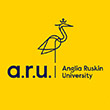Textile designer
A good eye for colour, texture, fabrics and pattern is not all that's needed to succeed as a textile designer - you'll also need to make industry contacts and build up a portfolio of work
Textile designers create two-dimensional designs that can be used, often as a repeat design, in the production of knit, weave and printed fabrics or textile products.
Working in both industrial and non-industrial locations, they often specialise or work in a specialist context within the textile industry. The two major areas of textiles are:
- interiors, such as upholstery, soft furnishings, and carpets
- fabrics for fashion or specialist areas like fireproof materials.
Some textile designers are self-employed, while others work as part of a design team.
Responsibilities
The day-to-day responsibilities of a textile designer include:
- producing sketches, designs and samples for presentation to customers
- making up sets of sample designs
- liaising with clients and technical, marketing and buying staff to plan and develop designs
- accurately interpreting and representing clients' ideas
- working out design formulae for a group of samples
- assessing and approving completed items and production standards
- working independently if self-employed, or liaising closely with colleagues as part of a small team
- using specialist software and computer-aided design (CAD) programs to develop a range of designs
- experimenting with colour, fabric and texture
- maintaining up-to-date knowledge of new design and production techniques and textile technology
- developing new design concepts
- ensuring that projects are completed on time
- visiting sites and other sources of ideas for designs
- sourcing fabrics and other materials at trade fairs, markets and antique shops
- attending trade shows, as a delegate or as an exhibitor - this may involve representing the company with a display or stand, or appraising the work of competitors
- keeping up to date and spotting fashion trends in fabric design by reading forecasts in trade magazines and using internet resources
- developing a network of business contacts
- if self-employed, managing marketing and public relations, finances and business administration and maintaining websites.
Salary
- Starting salaries are typically around £15,000 to £20,000, with higher rates of pay in London.
- A junior designer with one to two years' experience can expect to earn between £22,000 and £25,000. Designers with three to four years' experience can earn up to £28,000.
- Salaries for senior designers or design directors are around £30,000 to £40,000+.
Salaries vary depending on geographical location and type of employer. Many textile designers work freelance, often to commission, so income levels can vary greatly. Designers may find they need to supplement their income from other sources - teaching is a popular option.
Income figures are intended as a guide only.
Working hours
Working hours typically include extra hours to meet deadlines. Freelance designers do not have set hours and have to divide their time between designing and marketing their work.
Related case studies
What to expect
- Work settings differ and may include factories, backrooms or smart design studios. Freelance artists, craftspeople and designers may work from home or in workshops.
- Long-term self-employment is an option, although setting up your own business in addition to maintaining design work is demanding and can take time. A good resource for young designers wanting to set up their own business is The Design Trust.
- Jobs are available throughout the UK. There's a concentration of design studios in London and job availability is greater in the traditional centres of the textile industry, such as Scotland, the North West and the Midlands.
- It's possible for new graduates to obtain their first jobs, particularly in fashion design, in Italy, France or America, where valuable experience can be gained working with well-known designers before starting work in the UK. Organisations such as Global Experiences offer fashion design internships abroad.
- Working alone and to short deadlines can be stressful and there's constant pressure to produce new ideas and make new contacts by visiting trade fairs and other events. Using your creative abilities within a commercial environment requires the ability to cope with criticism if a particular piece of work is not well received by a client.
- Occasional travel within a working day and overnight absence from home may be required and overseas work or travel is possible.
Qualifications
A degree in one of the following areas may help your work as a textile designer, whether employed or self-employed:
- art and design
- fashion
- knitwear
- surface design
- textiles.
Textile degrees may have a specialist focus, such as constructed textiles, mixed media or printed textiles. You should check whether your choice of course is appropriate for the way you wish to work. For example, a mixed media course may be most relevant if you wish to work in decorative design, creating artefacts or in the craft industry.
Most fashion degree courses offer a general background in all aspects of fashion design, but it's possible to specialise in:
- clothing technology
- contour design
- costume accessory design
- knitwear
- production management.
A relevant degree can significantly increase opportunities, but entry is possible with an HND in fashion and/or textile design.
Entry without a degree or HND is possible, usually as a machinist or pattern cutter, but career development is slow without design training.
A pre-entry postgraduate qualification is not essential, although postgraduate study provides you with the opportunity to develop and experiment with ideas and techniques and to extend your expertise into related areas. Prospective postgraduate students will need a portfolio and would normally have already completed a relevant degree course or have substantial prior work experience.
Assistant designer positions are usually gained on completion of a specialist degree or diploma course. Graduates who have not followed this route will need to gain experience and develop a portfolio by either joining a degree course or undertaking short, part-time courses to develop knowledge and expertise. Those from other disciplines may have more difficulty, although colleges are increasingly offering part-time foundation and degree study routes suitable for non-design graduates.
Funding for textile-related courses is available from:
Search postgraduate courses in fashion and textile design.
Skills
You'll need to show:
- creative flair and artistic ability
- a good eye for colour, texture, fabrics and patterns
- excellent attention to detail
- an interest in fashion and textiles, and an understanding of trends and materials
- understanding and experience of using different textile processes and techniques
- design skills and the ability to use computer-aided design (CAD) packages
- good communication and teamworking skills
- ability to work to deadlines and a budget
- marketing, administrative and business skills - especially if you're self-employed.
Work experience
Relevant work experience, through either holiday work or course placements, is almost essential for getting into this industry. You should be proactive about looking for work experience and try to gain practical knowledge of relevant technical processes.
As in other areas of art and design, employment opportunities, both permanent and freelance, are more likely to result from speculative applications and effective networking than from a routine vacancies search.
It's important to build up relationships with more established designers, fashion houses and design companies in order to get commissions and placements.
Course tutors may be valuable contacts as many, if not all, work in the industry in addition to their teaching work. Attending trade fairs and other events is another effective way to make contacts.
Find out more about the different kinds of work experience and internships that are available.
Advertisement
Employers
Typical employers include:
- manufacturing and processing companies that produce clothing, soft furnishings and other textile-based products
- large fashion and clothing retailers
- design studios and consultancies
- small specialist design companies
- interior design and decoration services.
Textile designers may work for some of the above employers on a freelance basis, often through an agent. Working freelance may provide a route into working full time for a design studio or fashion and clothing retailer.
With experience and good contacts, textile designers may go on to run their own business. For examples of how some individual designers work, see Design-Nation.
Look for job vacancies at:
- Chartered Society of Designers (CSD)
- Denza International
- Fashion & Retail Personnel
- Textile Institute - student membership costs £10 and includes digital access to the institute's Textiles magazine.
Job vacancies can be difficult to find and many employers recruit from speculative applications. They also visit graduation shows in search of potential employees.
Contact major exhibition centres and check trade publications for information on trade fair events, which are an excellent opportunity to network. Entering competitions is another good way to get noticed by employers.
Directories listing relevant companies can be found on the websites of professional and trade associations such as:
Having a clear idea of the fields of design that interest you will help you decide which companies to contact.
Professional development
Training is often gained on the job - if you're starting out in a commercial design studio, for instance, you'll probably need training in practical processes.
Training provision will depend on the amount of practical and commercial experience you already have and the time that more experienced staff have available.
In addition to general textile design courses, such as the Level 3 Diploma in Design and Craft and the higher professional Level 4 Diploma in Creative Crafts, there are courses in specialist areas such as constructed textiles, machine embroidery and patchwork and quilting.
Specialist courses are available at all levels and through a range of learning options. For details of relevant courses, see providers such as:
Membership of relevant professional bodies, such as The Textile Institute, provides access to further opportunities for continuing professional development (CPD) and is useful for establishing industry contacts.
Career prospects
A common route within the textile design industry is to move from junior designer to designer, then progress to senior designer. However, the exact path will depend on your personal interests, experience, preferred working environment and professional reputation.
Progression may take time, particularly at the start of your career. At higher levels, a designer's work may involve more commercial and administrative activities, such as account and staff management.
For designers who choose to remain independent, the career path is less straightforward and very reliant on individual initiative and personal choices as to the type and volume of work undertaken.
Career progression depends on being proactive, making industry contacts and keeping up to date with new developments.
With experience, an established record and a supply of individual or corporate customers, some textile designers go on to set up their own design businesses. Whether they work in craft design, commercial textile design or as artists, this requires persistence, a hands-on approach and a good awareness of potential markets.
Alternative career options within the textile industry include embroidery designer, knitwear designer and tapestry designer.
Alternative careers
Related jobs and courses



graduate scheme
IT Design and Architecture
- Together Financial Services (7 other jobs)
- Competitive salary
- Cheadle



